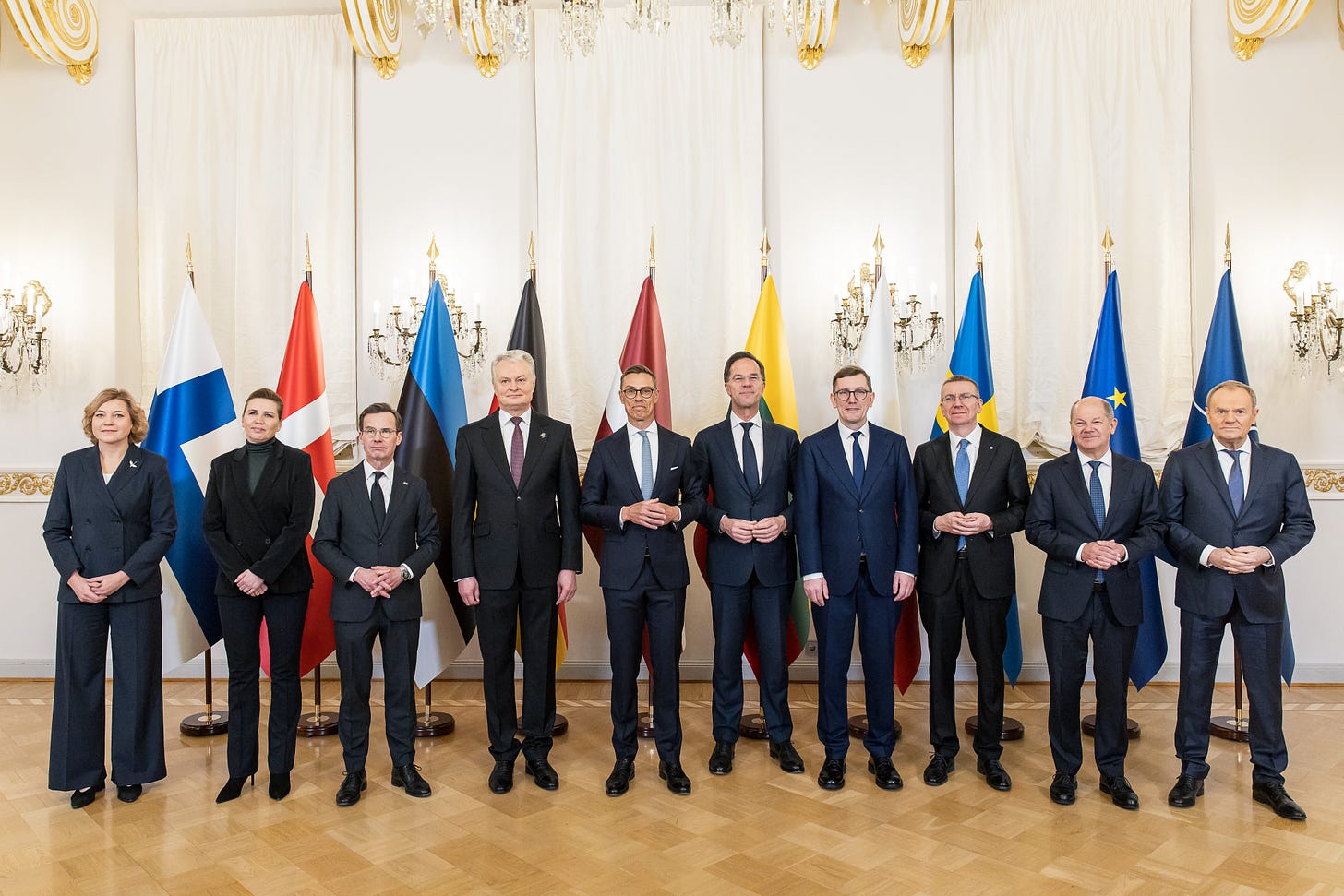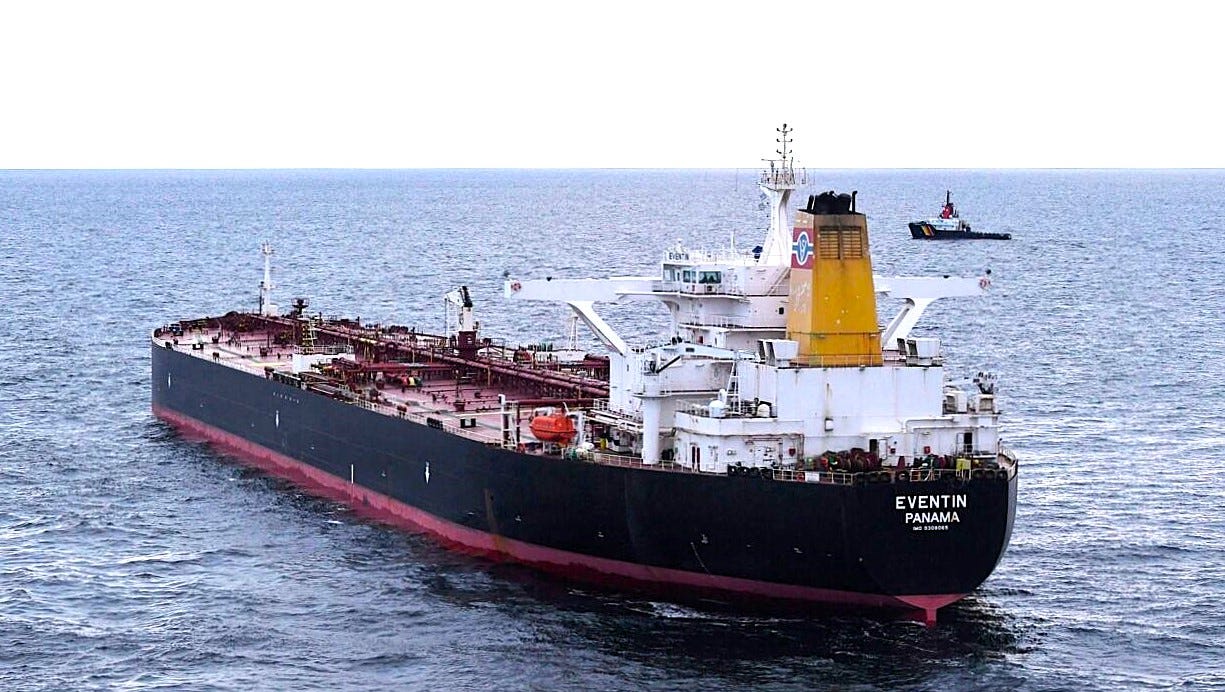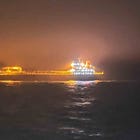Baltic Sentry - NATO Stepping Up
NATO launches 'Baltic Sentry' to increase critical infrastructure security
After months of hybrid warfare in the Baltic Sea, NATO is now collecting strength to better protect the waters and the infrastructure of the Sea and the surrounding countries. When Finland and Sweden joined NATO in 2023 and 2024, respectively, the Baltic became a NATO sea. Russia has just the smallest coastline around the towns and naval bases of Saint Petersburg and Kaliningrad. It was not expected, however, that Russia would hit back with actions of evasion and vandalism.
Obviously, Russia has not taken responsibility for any of this, so far. But it is impossible to ignore that these actions have a very strong relation to Russia, indirectly or mostly directly. As the German Foreign Minister mentions in her comment further down in this piece, it is about severed cables, moved border buoys, disinformation campaigns, GPS jammers, and also with dilapidated oil tankers. We can add many other types of harassment, such as inviting migrants to flood the border fences and posts, intimidating navy ship sailings, hacking of computer networks, arson attacks and other sabotage.
NATO has now responded with announcing a new coordinated effort in the Baltic Sea. The official announcement says:
NATO Secretary General, Mark Rutte co-hosted a Summit of Baltic Sea Allies on Tuesday (14 January 2025), along with President Alexander Stubb of Finland and Prime Minister Kristen Michal of Estonia.
At the meeting in Helsinki, Mr Rutte announced the launch of a new military activity by NATO to strengthen the protection of critical infrastructure. “Baltic Sentry” will enhance NATO’s military presence in the Baltic Sea and improve Allies’ ability to respond to destabilizing acts.
At the Summit, leaders from across the region addressed the growing threat to critical undersea infrastructure. The Secretary General said recent sabotage had damaged energy and communication cables, but he was confident that, “by working together with all Allies – we will do what it takes to ensure the safety and security not only of our critical infrastructure but of all that we hold dear.”
Family photo of the Summit: From left: Executive Vice-President of the European Commission Henna Virkkunen, Prime Minister of Sweden Ulf Kristersson, Prime Minister of Denmark Mette Frederiksen, President of Lithuania Gitanas Nausėda, President of Finland Alexander Stubb, NATO Secretary General Mark Rutte, Prime Minister of Estonia Kristen Michal, President of Latvia Edgars Rinkēvičs, Federal Chancellor of Germany Olaf Scholz and Prime Minister of Poland Donald Tusk. Photo: Matti Porre/Office of the President of the Republic of Finland
Before we continue, a summary of some of the incidents that have caused this new initiative from NATO and its member countries. Many of these have been covered earlier in this newsletter, see the list of links at then end.
Numerous incidents in the Baltic Sea - current status summary
Crude oil carrier Eagle S was arrested in the Gulf of Finland and is still held sequestered outside the port of Porvoo. The owner protested in court but was rejected. Russian officials denied to have anything to do with the ship. Finnish ship inspection entered the vessel (photo above) and found numerous faults that in themselves make the ship unseaworthy. This is typical of the Russian shadow fleet, consisting of older vessels that are unsafe and cannot be insured by regular insurance companies. Several countries have since decided to demand proof of insurance before allowing entry to the international trade routes, even only if they pass close by national territorial waters.
Another reminder of the dangers of the shadow fleet is the double shipwreck in the Kerch Strait between the Black Sea and the Sea of Azov. Weather it was the bad storm in the area or an undisclosed attack by Ukrainian forces, the two oil carriers broke in pieces and the oil spill reached beaches much further South in the Black Sea. The Russian effort to avoid or contain the oil spill was zero, null. The countries around the Baltic sea fears exactly that can happen in their waters, as well.
Crude oil tanker Eventin floating without power outside the German coast on Sunday. Photo: Havariekommando (German Sea Rescue Command)
The most recent example of this risk is the oiler Eventin of Panama that lost propulsion in the Baltic Sea between Germany and Denmark on 12 January. It was stormy weather, so the German rescue service towed it closer to the German shore for protection. German authorities are adamant that it cannot enter any of their ports because of the sanctions. And further, they say, there is not room for it anyway, at a length of 274 meters. The owner from the United Arab Emirates (with the ship registered in Panama) has sent two deep sea tugboats to relieve the German state rescue tugs. They proposed to tow it all the way to Skagen in Denmark, where it can be repaired. Russian ports have no equipment or skills to repair this type of machinery. Denmark, however, also has a full embargo, so it requires a dispensation, unless there is an emergency.
German foreign minister Baerbock: Russia endangers European security
"It is precisely this scenario that I have repeatedly warned against together with my colleagues from the Baltic region," said Federal Foreign Minister Annalena Baerbock (Greens) on Friday. "Russia is endangering our European security not only with its war of aggression against Ukraine, which violates international law, but also with severed cables, moved border buoys, disinformation campaigns, GPS jammers, and also with dilapidated oil tankers." The Foreign Office said that ships such as the wrecked oil tanker off Rügen were used to deliberately circumvent Western sanctions. According to the report, 79 ships have so far been sanctioned by the EU.
“Baltic Sentry” will involve a range of assets, including frigates and maritime patrol aircraft. The Secretary General also announced the deployment of new technologies, including a small fleet of naval drones, and highlighted that NATO will work with Allies to integrate national surveillance assets – all to improve the ability to protect critical undersea infrastructure and respond if required. NATO will work within the Critical Undersea Infrastructure Network, which includes industry, to explore further ways to protect infrastructure and improve resilience of underwater assets.
Mr Rutte also stressed the importance of robust enforcement. He highlighted how Finland has demonstrated that firm action within the law is possible, “Ship captains must understand that potential threats to our infrastructure will have consequences, including possible boarding, impounding, and arrest.”
Links to earlier posts on the Russian shadow fleet and hybrid warfare:
https://hanschristensen.substack.com/p/russians-or-climate-change-rail-line
https://hanschristensen.substack.com/p/dangerous-cargo-ship-from-russia
https://hanschristensen.substack.com/p/warrant-for-arrest-of-ukranian-diver
https://hanschristensen.substack.com/p/finland-turns-right-in-their-own
https://hanschristensen.substack.com/p/russian-ghost-ships-ban











…it’s unbelievable… and they never thought it would happen right ? …when the fucking world will learn - putin need to be put down as a rabies dog period, its cancer, rusha is genetic garbage that absolutely nothing came and would out of it